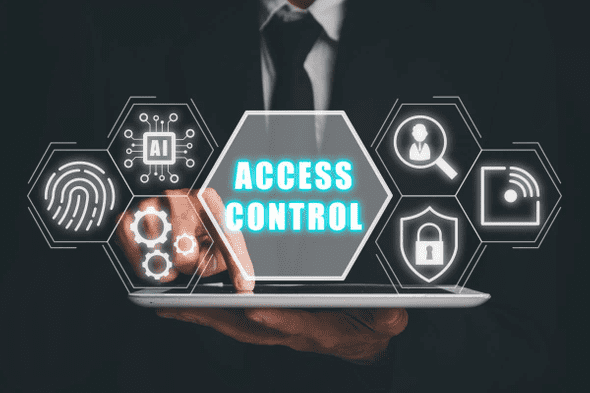In an era where data breaches and cyberattacks are on the rise, protecting access to sensitive information and systems is crucial. Access control is the mechanism that ensures only authorized individuals can access certain systems or information. The key components of access control are identification, authentication, authorization, and auditing. Each of these components addresses the essential questions of who, what, when, and where concerning system access.
1. Identification – Who is accessing the system?
Identification is the process of determining who is trying to access a system. This is achieved by the user providing a unique identifier, such as a username, employee number, or ID. It simply establishes a claim to an identity, which must be validated by the next step, authentication.
- Example: A user enters their company-issued email address to begin the login process.
2. Authentication – How is their identity verified?
Once a user has identified themselves, authentication verifies that they are who they claim to be. Authentication can be achieved through various methods, depending on the sensitivity of the system and the level of security required. These methods fall into three main categories:
a. Knowledge-based Authentication (Something You Know) This method requires users to prove their identity by providing information only they should know. The most common example is a password or PIN.
- Example: Entering a password when accessing a banking website.
b. Possession-based Authentication (Something You Have) This involves using a physical object that the user possesses to authenticate their identity. Common examples include a security token, a smart card, or a mobile device used for one-time passcodes.
- Example: Using a security token to generate a unique code for two-factor authentication (2FA).
c. Biometric-based Authentication (Something You Are) Biometric authentication relies on the user’s unique physical characteristics, such as a fingerprint, facial recognition, or retina scan, to verify their identity.
- Example: Unlocking a smartphone using facial recognition or a fingerprint scan.
d. Multi-Factor Authentication (MFA) MFA combines two or more of the above methods, adding an extra layer of security. For example, a system might require both a password and a fingerprint scan, or a password and a one-time code sent to a user’s mobile device.
- Example: Logging into a corporate system with both a password and a fingerprint scan, or receiving a one-time passcode via SMS after entering a password.
3. Authorization – What can they access?
After a user is authenticated, authorization determines what they are allowed to access. This step ensures that users can only perform actions or view data that their role or permissions allow. This can vary based on job role, security clearance, or other factors.
- Example: An HR manager can access employee records, but a software engineer may not have permission to view these records.
4. Auditing – When and where did the access occur?
Auditing involves tracking and logging access to systems, files, and resources. It provides an answer to when and where access happens and is vital for detecting unauthorized access or misuse. Auditing allows organizations to maintain accountability and meet compliance standards.
- Example: A system logs every time a user accesses sensitive payroll data, including the time, date, and location of access.
Types of Access Control Systems
Access control systems vary in how they manage who, what, when, and where users can access resources:
- Discretionary Access Control (DAC): Users have control over who can access their resources.
- Mandatory Access Control (MAC): The system enforces strict security rules, limiting who can access information based on labels like classifications.
- Role-Based Access Control (RBAC): Who you are in the organization determines what you can access, based on your role.
- Attribute-Based Access Control (ABAC): Access is based on attributes such as job role, location, or the time of access, ensuring who and what are tightly controlled.
Best Practices for Implementing Access Control
To effectively manage access to resources, organizations should adopt the following best practices:
- Least Privilege: Give users the minimum level of access necessary for their role.
- Multi-Factor Authentication (MFA): Use MFA to enhance security by requiring more than one method of verification.
- Separation of Duties: Avoid giving one person too much control over critical processes.
- Regular Auditing: Continuously monitor and log access to detect anomalies and ensure compliance.
- User Training: Train employees on the importance of secure access control and encourage strong authentication practices.
Conclusion
Access control is a vital component of a robust security strategy. By focusing on who has access, what they can do, when they can do it, and where they can access it from, organizations can safeguard their data and systems from unauthorized users. Through various authentication methods—such as passwords, security tokens, biometrics, and multi-factor authentication—businesses can ensure that only legitimate users gain access to sensitive resources. Coupling these with proper authorization and auditing measures further strengthens the security posture of an organization.

